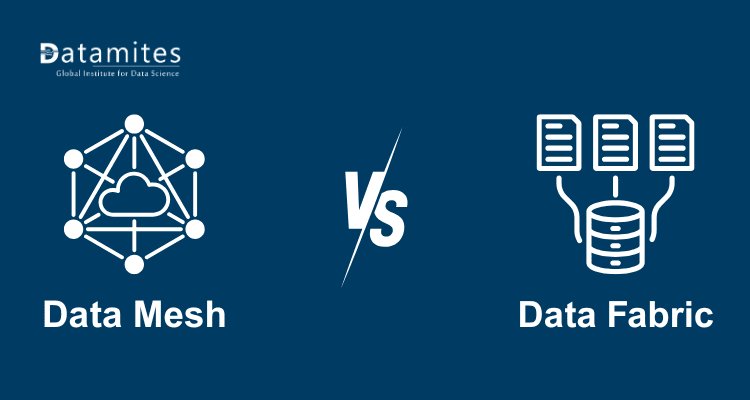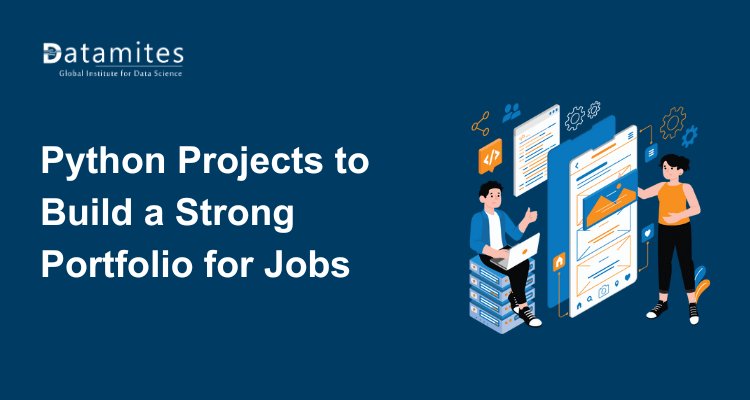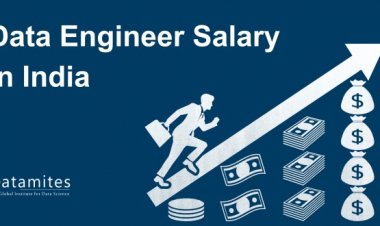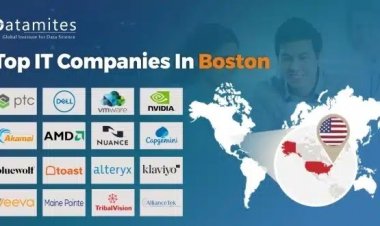What’s Next for Data Analysts? Predictive and Prescriptive Analytics
Explore the future of data analytics with predictive and prescriptive analytics. Learn how data analysts are using these advanced techniques to transform industries like healthcare, e-commerce, and finance.

Data analytics has evolved significantly over the years, and the role of data analysts has expanded beyond simply analyzing past trends. With the rise of advanced techniques such as predictive and prescriptive analytics, data analysts are now empowered to not only forecast future trends but also recommend actionable strategies to optimize business operations. This shift is transforming data analytics jobs, opening new opportunities for professionals in the field.
In this article, we will explore what predictive and prescriptive analytics are, how they work, and how they are shaping the future of data analytics careers, particularly in industries like healthcare, e-commerce, finance, and manufacturing.
What is Data Analytics and its types?
Data analytics involves analyzing, organizing, and interpreting data to discover valuable insights, patterns, and trends that guide strategic decision-making. It helps businesses optimize operations, predict future outcomes, and improve customer experiences. The four primary types of data analytics include:
- Descriptive Analytics – what happened,
- Diagnostic Analytics – why it happened,
- Predictive Analytics – what could happen,
- Prescriptive Analytics – what actions to take.
Let’s move forward and see in detail about the predictive and prescriptive Analytics and also its impact across industries.
What is Predictive Analytics?
Predictive analytics is a field of data analysis that leverages historical data, statistical algorithms, and machine learning models to forecast future events or trends. By analyzing patterns and trends in data, predictive analytics helps businesses forecast what is likely to happen in the future, providing actionable insights for decision-making.
Key Techniques:
- Machine Learning: Machine learning, a fundamental technique in predictive analytics, uses algorithms that learn from historical data to forecast future events. For instance, a healthcare data analyst might use machine learning models to predict patient readmission rates.
- Regression Analysis: This statistical technique is used to understand relationships between variables and predict the value of a dependent variable based on the value of independent variables. For example, a data research analyst could use regression analysis to predict sales growth based on marketing efforts.
- Time Series Forecasting: This technique involves analyzing data points collected over time to identify trends and forecast future values. For example, a data analyst company might use time series forecasting to predict future demand for a product.
Use Cases:
- Customer Churn Prediction: Businesses can use predictive analytics to forecast customer churn and take proactive measures to retain customers.
- Sales Forecasting: Sales forecasting using predictive models enables businesses to anticipate future sales, allowing them to optimize inventory management and marketing strategies.
- Fraud Detection: Financial institutions can use predictive analytics to identify potentially fraudulent transactions before they occur.
Read the articles below:
- Top skill for Data analyst: Python, Excel, SQL
- Top Industries Hiring Data Analysts in 2025
- Top 5 Emerging Trends in Data Analytics for 2025
What is Prescriptive Analytics?
Prescriptive analytics not only forecasts future outcomes but also suggests targeted actions to achieve optimal business results.Building on the insights from predictive analytics, prescriptive analytics identifies the most effective course of action to reach desired objectives.
Key Techniques:
- Decision Trees: These models visually represent decisions and their possible consequences, including risks, rewards, and probabilities. A data analyst company might use decision trees to suggest the best strategy for reducing costs or increasing revenue.
- Optimization Algorithms: These algorithms identify the best possible solution from a set of alternatives. For example, a healthcare data analyst might use optimization algorithms to allocate resources efficiently in a hospital.
- Simulation and Scenario Analysis: This technique simulates different scenarios to assess the potential impact of various actions. A data research analyst may use this method to simulate how changes in marketing budgets could affect customer acquisition.
Use Cases:
- Inventory and Supply Chain Optimization: Prescriptive analytics helps businesses optimize their inventory levels and supply chain operations to minimize costs and maximize efficiency.
- Marketing Budget Allocation: By analyzing past data and predicting future outcomes, prescriptive analytics can recommend the most effective allocation of marketing resources.
- Resource Planning: Prescriptive analytics enables businesses to allocate their resources efficiently, ensuring that key areas like staffing, equipment, and materials are used optimally.
Tools and Technologies Empowering This Shift
Advancements in technology are making it easier for data analysts to leverage predictive and prescriptive analytics. Some of the most popular tools and technologies include:
- Python and R: These programming languages offer powerful libraries for predictive and prescriptive modeling, such as Scikit-learn, TensorFlow, and Statsmodels.
- Tableau and Power BI: These visualization tools allow analysts to present data-driven insights in an easy-to-understand format, aiding decision-makers in adopting predictive and prescriptive models.
- Cloud Computing: Cloud platforms like AWS, Microsoft Azure, and Google Cloud provide the computational power needed to process large datasets, making it easier for data analysts to implement complex predictive and prescriptive models.
How Predictive and Prescriptive Analytics Are Transforming the Data Analyst Role?
The growing adoption of predictive and prescriptive analytics is transforming the traditional role of data analyst companies. Instead of merely analyzing past data and reporting findings, modern data analysts are becoming integral to the decision-making process. Their ability to predict future trends and recommend actionable strategies is empowering businesses to make smarter, data-driven decisions.
As a result, there is growing demand for data analysts with specialized skills in predictive and prescriptive analytics. Professionals with expertise in machine learning, optimization algorithms, and statistical modeling are becoming increasingly valuable. For individuals pursuing a career in data analytics, acquiring these skills can open up opportunities in a wide range of industries.
How Data Analysts Drive Impact Across Industries?
Data analysts are pivotal in driving business growth by leveraging predictive and prescriptive analytics across various sectors. Below are some industries that are leading the adoption of these advanced analytics techniques:
1. Healthcare
In the healthcare industry, data analysts use predictive models to forecast patient outcomes, optimize treatment plans, and improve patient care. Healthcare data analysts play a crucial role in using predictive analytics to reduce readmissions and predict disease outbreaks. Prescriptive analytics helps healthcare providers allocate resources efficiently and improve patient care processes.
2. E-commerce
E-commerce companies use predictive analytics to predict customer behavior, personalize recommendations, and optimize inventory management. Prescriptive analytics is employed to improve marketing strategies, optimize pricing, and enhance customer retention programs.
3. Financial Services
In the financial sector, predictive analytics is employed for credit scoring, detecting fraud, and forecasting market trends. Prescriptive analytics helps financial institutions optimize investment strategies and risk management processes.
4. Manufacturing
Manufacturers use predictive analytics for demand forecasting, equipment maintenance, and production scheduling. Prescriptive analytics enables them to optimize supply chain management and improve production efficiency.
Statista research shows that retailers using AI and machine learning analytics see a 5–6% boost in sales and profit growth compared to those who haven't adopted these technologies.
The future of data analytics is promising, with predictive and prescriptive analytics at the forefront, revolutionizing the role of data analysts. As businesses increasingly rely on data to drive decisions, data analysts are evolving from traditional number crunchers to key players in shaping strategy.
For those interested in data analytics jobs, mastering these advanced analytics techniques will be crucial for staying competitive in the field. With industries like healthcare, e-commerce, finance, and manufacturing adopting these technologies, the opportunities for data analysts are vast and varied. According to MarketsandMarkets, the global AI analytics market is forecasted to grow from USD 13.5 billion in 2023 to USD 38.8 billion by 2028, achieving a (CAGR) of 23.3%.
Refer to the articles:
- Top IT Courses in Pune
- Top IT Courses in Hyderabad
- Top IT Courses in Chennai
- Top IT Courses in Bangalore
By staying at the forefront of this transformation, aspiring data analysts can carve out successful careers, helping businesses harness the full potential of their data.
Enrolling in a Data Analyst course in Bangalore or other major tech hubs such as Chennai, Pune, Hyderabad, Ahmedabad, Coimbatore, Delhi, Jaipur, and Mumbai provides excellent hands-on industry exposure, valuable networking opportunities, and significant career advancement. These cities offer the perfect ecosystem to build a successful career in data analysis and software development.
Looking to start or elevate your IT career? DataMites Institute stands out as the best institute for industry-aligned training in emerging tech domains.
Whether you're aiming to become a Data Scientist, Data Analyst, AI Engineer, Machine Learning Expert, or Python Developer, DataMites offers comprehensive and job-oriented courses tailored to today’s market demands.
At DataMites, students benefit from live training sessions, on-demand offline classes, and mentorship by industry experts. Each course integrates real-time projects and internships, ensuring you gain practical experience. With accreditations from IABAC and NASSCOM FutureSkills, certifications from DataMites are globally recognized.
The institute also offers placement support, mock interviews, and resume-building workshops to prepare you for top-tier data analytics jobs. Don’t miss their intensive BootCamp training – a fast-track route to success. For aspirants in Siliguri seeking trusted, flexible, and impactful training, DataMites is the perfect launchpad.
DataMites Institute offers Data Analyst courses in Pune but also across major cities such as Chennai, Hyderabad, Bangalore, Ahmedabad, Jaipur, Coimbatore, Delhi, and Mumbai—providing flexible and accessible learning options for aspiring professionals across India.





